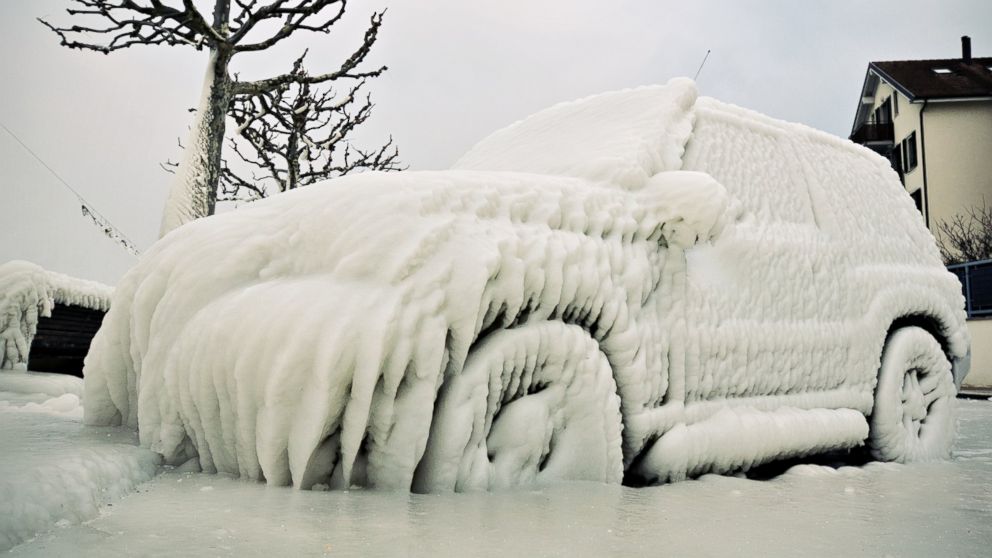5 Car Maintenance Moves Consumers Put Off
Stop doing these five things that are killing your car.

Jan. 1, 2014— -- intro: For most consumers, a car is their second biggest investment, yet many treat their vehicle about the same as their washing machine, electric range or other major appliance. They don't worry about it until something goes wrong.This is particularly true for younger drivers, who are responsible for the care and maintenance of a vehicle for the first time, says Brian Hafer, vice president of marketing for AutoMD.com.
"Not following the maintenance schedule in the owner's manual is very common," Hafer says. "People have these repair issues because they didn't consult their owner's manual. Typically, it happens more often with younger drivers because they just aren't aware."Although they don't have to survive re-entering the atmosphere, in many ways, today's automobiles are more complex than the early Mercury space capsules. Overlooking routine car maintenance or ignoring warning signs can significantly add wear and tear, eventually killing your car. Here, Bankrate has put together a list of five common ways you might be killing your car. All cost estimates are from AutoMD.com and are based on a 2010 Honda Accord 2.4 EX-L. Estimates may vary by car model and ZIP code.
quicklist: 1title: You don't check or change the car's oiltext: According to AutoMD's Hafer, issues with the oil are the most common and potentially costly car maintenance problem. Although today's vehicles don't burn oil the way they did 25 years ago, troubles can arise that reduce the engine's oil level -- sometimes to dangerously low levels. Oil is your car engine's lifeblood. Checking the level every couple of weeks will alert you to a problem if your car is consistently burning or losing oil.
Read More From Bankrate: Car maintenance: Don't skip these 8 moves
But oil level isn't the only issue. As it circulates through your engine and ages, oil gradually wears out. "If you don't change the oil regularly, your engine just isn't getting the lubrication it needs," Hafer says.
Regardless of what you might read online, your owner's manual is the ultimate authority on how often to change your oil. It spells out exactly how many miles you can drive (or how many months, if you don't drive your car much) between oil changes. Estimated cost of an oil change at a shop: $39.99.
quicklist: 2title: You don't change the air filtertext: Changing the air filter is another one of those routine car maintenance chores you might forget about if you're not following the owner's manual schedule.
Just like you, your car's engine must breathe. The air filter is the engine's airflow gateway. When a person's airflow is restricted, less oxygen gets into the bloodstream for delivery to muscles, including the heart. Less air translates into reduced performance in people and cars. But it's not just an issue of reduced performance.
Read More From Bankrate: 8 top auto maintenance myths
"Your engine needs clean air," Hafer says. "If the filter is dirty, the airflow is restricted. This can cause your engine to overheat, which is going to cost a lot more than an air filter." Having a shop replace your air filter will run about $35.
Asking your car to perform with a dirty air filter is like trying to run the 100-yard dash with one lung.
quicklist: 3title: You're braking with worn brake padstext: If applying the brakes is rewarded with a squealing noise, it's your car telling you that you're overdue to replace your disc-brake pads. All new cars today have disc brakes on the front wheels, and most have them on all four wheels.
When disc brakes are applied, a caliper closes on both sides of the brake's rotor or disc, slowing and eventually stopping the wheel's rotation. The pads are a layer of material between the metal caliper and the rotor. They eventually wear down.
Read More From Bankrate: 5 first-class tips to getting upgraded
"When the pads get low, the bare metal rubs on the rotor," Hafer says.
In this state, the brake is less effective and the rotor can be damaged.
Because of different driving behavior, there is no established mileage for changing the pads, but Hafer says 20,000 to 25,000 miles is about average. Rotating your tires is the ideal time to check the brake pads. Just replacing the brake pads on four wheels at a shop will cost about $250. However, there are other services that AutoMD recommends, such as rotor refacing, that can add as much as $150 to the job.
quicklist: 4title: You're riding on worn shock absorberstext: According to Hafer, shock absorbers -- or just "shocks" -- perform a number of essential duties critical to the well-being of your car's suspension, as well as to how your car handles and rides.
In the areas of handling and comfort, shocks provide the fine-tuning element to your car's suspension, determining how your car corners while absorbing the bumps and potholes in a road's surface. A car's springs do the hard work, but it's up to the shocks to absorb and dissipate the energy produced by the springs.
Worn-out shocks put extra stress on all your car's suspension elements, causing them to wear faster.
The amount of work shocks must do and the rate at which they wear has everything to do with the condition of the roads on which you drive. Roads in colder climates tend to have more potholes, so shocks wear more quickly.
"If you drive in an area with better roads, you may never need to change your shocks," Hafer says. "But 50,000 miles is about the average." Replacing all four shocks at a shop will cost about $820.
quicklist: 5title: You're exposing your car to extreme temperaturestext: Whether the temperature is in the 90s, 100s or below freezing, it can take a toll on your car. By Hafer's account, exposure in these extreme temperatures can be a car killer, making regular car maintenance even more important.
Intense sun and heat bakes a car's finish, cracks interior vinyl and plastic surfaces, and generally makes its cooling system work harder, increasing wear. Less time between waxing can reduce exterior damage. Window tinting or putting a sunshade across the windshield can minimize interior damage.
In extreme cold, an engine block heater can help minimize the cold's effects on the engine. But in any event, it is critical to allow an engine to warm up before driving. This allows the oil to thin out enough to flow freely through the engine. Engine block heaters vary in type and cost. The cost of parts and installation for a frost plug heater start at about $175.
But, all the mechanicals are threatened when operated in extreme cold. "Just trying to put the window down in extremely cold weather before warming up the car can cause the mechanism to break," Hafer says.
Read this story on Bankrate.com.
Your engine coolant should be replaced every 24 to 36 months. Flushing and refilling the system by a shop will cost roughly $90.Putting your car in a garage is the best solution to extreme heat and cold.
This work is the opinion of the columnist and in no way reflects the opinion of ABC News.




